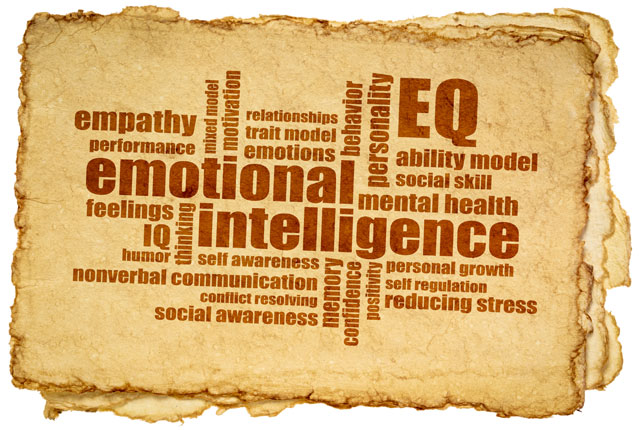Introduction
Much of the goal of mediation is to find the best outcome for the most people. Ideally, the complainant and respondent will walk out of mediation feeling as if they have reached a win-win outcome. Of course, many of the compromises must happen to reach this result. By guiding the parties through the process of brainstorming, the mediator can help improve the chances of a mutually agreeable resolution to the parties' issues.
Objectives
In this article, you will learn what how to facilitate the brainstorming segment of the mediation process.
-
Why is brainstorming effective in mediation proceedings?
-
What is the proper process for brainstorming solutions?
-
How and when do you evaluate potential solutions?
Brainstorming is a great activity, because it encourages all members of the group to offer their own input, as well as to accept others'. To begin, the mediator will explain how the brainstorming process works and will offer to record the ideas. This can be done by writing them on a whiteboard or easel, although it may be useful to write them on a notepad, as well, so that they can be taken into individual caucuses, if necessary.
The brainstorming process is one that encourages both parties to develop potential solutions to their problems. To create an environment in which people are cooperating, start with one of the smaller or easier-to-solve issues. Issues of money will be saved until the end of the brainstorming process, once the parties have already come to consensus on other topics and have developed a less adversarial relationship. The mediator asks the parties to offer solutions to the problem and then writes them on the board and notepad.
There are some specific "rules" that pertain to brainstorming, and by following them, you can increase the quality of both the responses and the relationship building potential of the exercise.
-
Use the brainstorming session to come up with as many potential solutions as possible.
-
Write down every single idea that is offered, without exception.
-
Encourage people to come up with ideas that are both conventional and creative.
Prioritizing and Grouping Ideas
Once the ideas have been gathered for ONE problem, it is time to examine the list. The first step is to clarify and explain any ideas that might need more information. This should be a brief process and would not be intended to work as a strategizing session for any one idea. Once everyone is clear on what the list items represent, it is time to group them together.
What you will likely find is that some of the suggestions are very similar. In mediation, it is common to find that parties are saying the same thing in different words. The brainstorming exercise may offer a concrete example of this. All ideas that are generally the same should be grouped together. As you examine the list together with the parties, you may also find that some of the items can naturally be grouped together. In this case, more than one suggestion might come together to help create a solution. This is especially helpful if both parties have suggested elements that are being combined into one workable idea.
You may find, especially in the earliest stages of this process, that the parties are able to agree upon approaches and solutions after just these steps have been followed. On the other hand, the parties may still be at odds with one another. In this case, it may be beneficial to caucus again, as was described in the section "Open Session." The caucus can be used to determine how to move forward to make decisions and reach agreement.
Either in the group or in caucus, it may be time to start evaluating the ideas for effectiveness and potential to work. There are many ways to evaluate an idea. It may be advisable to focus on objective criteria in this type of setting. Some suggestions might include:
-
Is the idea fair to both parties?
-
Does the idea have potential to work?
-
Is there a precedent for the idea?
-
Is the idea a standard or a common business practice?
-
Can the idea be efficiently implemented?
The idea does not have to pass any of these "tests," but these criteria do give a starting point for narrowing down the options.
One useful aspect of the brainstorming session is that it can help you understand where each party's priorities are. Either in the larger group or in a caucus, you can work with the parties to determine their rankings for the suggested solutions. The parties may list them from first choice to last choice or may assign a score to each. While each party may have a different top choice, you may find that they can reach common ground by utilizing suggestions offered during the brainstorming process.
Introduction
A solid agreement is the intended outcome of any mediation, and all of the parties involved will put in a considerable amount of time and effort to reach this agreement. It is important to note, however, that even a written agreement between the parties is not a contract. The mediator cannot force them to come to an agreement, nor to uphold it after the mediation has concluded
By utilizing the proper tools and training, the mediator strives to help the parties come to a positive resolution of their situation. Sometime this will not require a written agreement; rather a verbal one will suffice. In many cases, however, a written agreement will be an important symbol of the work that went into the mediation. It is the final product of the effort that each of the parties made in order to come to solve their own dilemmas.
Objectives
In this article, you will learn how to create an effective agreement with the help of the complainant, respondent, and their advocates.
- What information needs to be included in the completed mediation agreement?
-
How and why do you create an interim agreement, and how is this related to an earlier phase of the mediation process?
-
How can you infuse the mediation agreement with more legal terminology, if necessary?
The Written Agreement
The written mediation agreement is not a legal document, and therefore, it will not be worded in the same way as a court document.In most cases, the parties themselves will actually create much of the agreement, although the mediator will certainly be available to offer input and guidance. Because of this method for developing an agreement, it will be understandable by everyone involved and will be clear and direct in what needs to happen to comply with what has been decided.
Because the mediator will have much more experience in the agreement process, he or she will be invaluable in helping the parties draft their final document. Typically speaking, there will be at least seven points covered in the agreement:
1. Identify the parties involved. In the case of private mediations, this will usually mean to use the parties' names. If an organization is being represented by an individual, then the mediator should determine who is authorized to sign off on the agreement.
2. The parties should outline the circumstance within the agreement. This is not a time to list every grievance or detail; rather, the situation should be summed up, including why the parties have gone to mediation, a statement that they both want to resolve the situation, and an explanation that the agreement is a result of the mediation process.
3. A description of the main points of the conflict. These will likely have been determined in the open session and should be listed from the most difficult points to the least difficult. This can extend to both personal ideas about what is important and to legal implications on the order of how the resolution must be implemented.
4. As the mediation process unfolds, the parties will come to a variety of agreements. This may be especially obvious during the brainstorming phase when solutions are created for each of the underlying issues. An interim agreement should be created in which these agreements are put in writing throughout the course of the mediation. As this document grows, so too does the potential for a positive resolution.
5. The interim agreement that has been created throughout the mediation will need to be revised. It is great information to use in the drafting of the final agreement. This may even take place in separate meetings after the mediation. The mediator can meet with both parties to work through the revisions and then get everyone back together for the final approval. This can be tricky, however, as each change has the potential to undermine the overall agreement.
6. Reviewing the agreement. It is of utmost importance that both parties read and understand the agreement that has been drafted. This may even require the mediator to read the document aloud to both parties simultaneously. Each party�s attorney may review the final agreement, as well.
If the parties do wish for the document to be created with more legal terminology, they can work with an attorney to revamp it to reflect this desire. Some mediation centers will actually have an in house attorney who is available to offer advice during the mediation process, as well as to work with the drafting of the final agreement. If not, the parties can certainly involve their own legal counsel to create the document that they require. An attorney may also be required if the mediation was court ordered, and it must be demonstrated that an agreement has been reached.






























